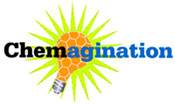Programming for Pre-College Educators

Wednesday May 16 – PM
Bioprocess Science/Biomanufacturing Session – 1:50 to 4:50 pm
Abstract: This session will examine the chemical and biological processes relevant to the purification and production of therapeutically active biologics. The session will also explore the ways in which the regional educational community is addressing the need to train skilled bioprocess science and biomanufacturing technicians.
Thursday May 17 – PM
MARM Keynote Address by Professor Bassam Shakhashiri – 6:00 pm
“Enlightenment and the Responsibilities of the Enlightened in Communicating Chemistry”
Friday May 18 – AM
Chemical Education Sessions – 9:00 am to noon
Submit a paper for oral presentation or poster presentataion!
Friday May 18 – PM –
Two concurrent Workshops
Vernier Lab Probes and Sensors Interfacing in the Lab – 1:50 to 4:50 pm
Abstract: This workshop offers you hands-on experience collecting and analyzing chemistry data, using computers or TI graphing calculators. The award-winning Logger Pro data acquisition software will be used to display, graph, and analyze data. Data will be collected using sensors such as the Vernier Drop Counter, Temperature, Pressure, pH, Conductivity, and Colorimeters. You will also have an opportunity to use the Ocean-Optics powered Vernier Spectrometer. All experiments in the workshop are excerpts from our popular Chemistry with Computers or Advanced Chemistry with Vernier lab books.
Teaching Forensics – 1:50 to 4:50 pm
Abstract: This workshop is intended primarily for high school teachers who want to incorporate forensics themed laboratory experiments into the chemistry curriculum. Several experiments will be demonstrated including: a TLC analysis of inks and lipsticks; an identification of fabrics using infrared spectroscopy, microscopy, and selective dyeing; an immunoassay laboratory experiment incorporating the principles of diffusion and precipitation; and soil analysis illustrating the principles of pH, particle size distribution, and moisture content. Many of the experimental methods can be incorporated into a crime scene scenario. An example of such an integrated laboratory experiment will be described.
Saturday May 19 – AM
Chemagination – 11:30 am to 4:30 pm, in Phaler Auditorium (100)

For this competition, high school students are asked to imagine that they are living 25 years in the future and have been invited to write an article for ChemMatters, a magazine for high school students that focuses on the role of chemistry in everyday life. The subject of the article is: “Describe a recent breakthrough or innovation in chemistry and/or its applications that has improved the quality of people’s lives today.” The article is written to fit in one of four categories (either Alternative Energy Sources, Environment, Medicine/Health, or New Materials.)
In addition to the article, students are asked to design a cover for the magazine. The article must be written as if the student is living in the year 2032, looking back at innovations that have occurred since 2007.
For additional information see the Chemagination Flyer (pdf) and contact Louise Lawter ().